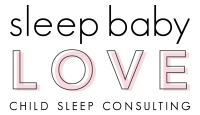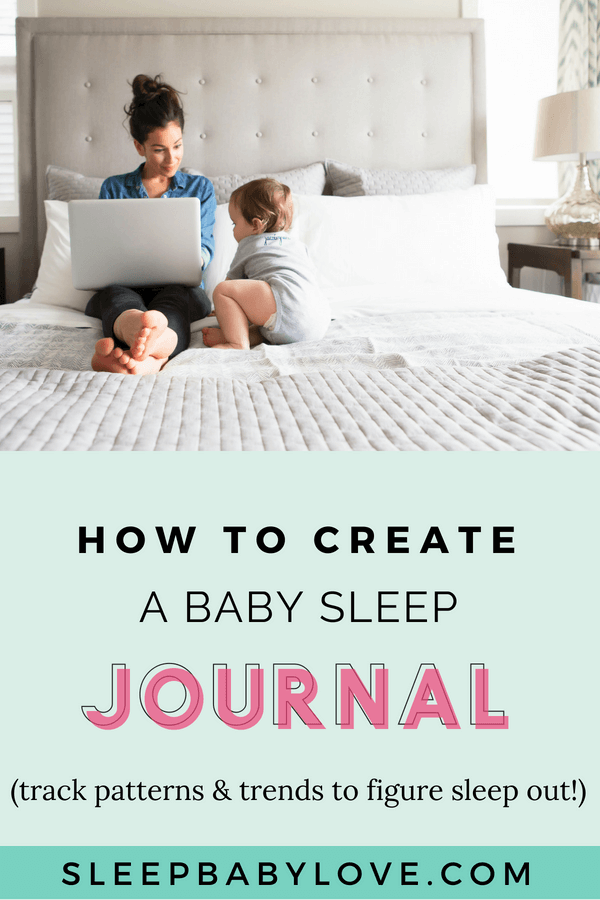How to Create a Baby Sleep Log – To Uncover Patterns and Trends
I LOVE a great baby sleep log!!!!
And I know I’m not alone. Or am I? Do you even know what a sleep log is?
Starting a sleep log is the best way to uncover patterns and track trends in your child’s sleep.
Sleep tracking, sleep journaling, sleep logging, or whatever you want to call it is the act of keeping a log to uncover pattern and trends with regards to your baby or child’s sleep. It’s important to keep a sleep log to help ensure your baby is getting the right amount of total sleep.
Just like in adults, baby and toddler’s sleep is regulated by their circadian rhythm or body clock. So just like you as an adult have regulated sleep patterns, there are natural times that a baby can fall asleep and have a more restorative and restful sleep by staying asleep longer. The younger the baby, the more sensitive those times are so a sleep log will allow you to see trends and help get on a great schedule with you your child.
How Can I Create A Baby Sleep Patterns Chart:
There are two ways to create a sleep log – either using an online sleep log or by creating one by good ol’ paper and pencil. As a girl who lags technology by years, I prefer the online option. Why? Because it’s easier!!!!!!! Regardless how you do it, the fundamentals of keeping a sleep log are the same.
The Components of Keeping a Sleep Log Include:
- wake up time
- what time you put down for naps.
- what time baby fell asleep and how long the nap lasted. Also, did baby wake up happy or crying?
- bedtime put down and asleep time.
So this is what the handwritten sleep log would look like: (yes, I know we all wish we had that schedule )
- Wakeup: 7am
- Nap #1: Put Down: 8:50, Asleep, 9am – 10:20am (notes, went down quickly, woke happy)
- Nap #2: Put Down: 12:45, Asleep 1:00pm – 3:00pm (notes: fussed for 5 mins, chatted for 10 mins before nap, woke happy)
- Bedtime: Put Down 6:45pm, Asleep 7:00pm-1:30am
- Feed: 1:30-2:00am
- Asleep: 2:00am – 7am
Once you have several days of these sleep logs, you can compare the notes from prior days to try and uncover patterns and trends.
- Is your baby getting the right amount of total sleep?
- Is there a certain time that your baby will nap longer?
Some babies are sensitive from even a 10 minute difference on the timing of their naps so, through a sleep log, you can find out those variables.
In my experience, I was able to uncover that the magical nap times for my baby from 7 to 15 months was 8:45am and 12:45pm. And, I learned that she could have a 4 hour wake-time before bed without compromising overnight sleep, even when many other babies I knew couldn’t handle that long of a stretch.
A Sleep Log Can Also Help You Track Additional Information Related to Sleep Including:
- Total Overnight Sleep – bedtime to wake-up, less the time for any feedings or night wakes
- Wake-Times Between Naps: Time from one wake up to another sleep (including the transition to sleep time)
- Total Wake-Time: The amount of time that your child is up during the day (calculated from midnight to midnight since that’s the way the online sleep logs do it)
- ***all of these terms plus more can be defined here
How Online Sleep Tracking Makes It So Much Easier
There are many online sites out there, but I have personally been a fan of TrixieTracker.com since it’s easy to enter your schedule via a phone or computer. It also has great sharing capabilities allowing multiple users to enter information (such as a nanny or caregiver) and allows you to give access to your child’s site, so someone like a sleep consultant (me!) can review and provide feedback.
Since we are also in the digital age there are apps out there that have the same functionality – such a BabyConnect and Total Baby.
I am a huge believer in the power of a sleep log and used it myself for a LONG time! I used Trixie Tracker as a paying member and when things in sleepland got better for my daughter, I let my subscription expire only to re-start it when things got bumpy again. Now that my youngest is finally past the 2 to 1 nap transition, I no longer have my membership and I’m really, really, really hoping that I don’t have to start it back up in the future.
Shading Can Be Helpful
There are other ways using paper and pen: BabyCenter.com has an Online Sleep Patterns Chart which can be used to show patterns and trends. A similar chart is shown in Dr. Ferber’s popular book, Solve Your Child’s Sleep Problems. The intention is to have the shaded areas represent sleep, and the areas that aren’t shaded to represent awake time. Overtime, you can see neat shaded areas start to form to show as your baby gets on a sleep schedule.
Who’s Ready?
Just so you know, sleep logs are not just for babies! If you have a toddler that is going through a tough 0 to 1 nap transition, a sleep log can help show if they are getting more total sleep on days when they have or don’t have a nap. Does anyone else out there keep a sleep log? Share your experience!

